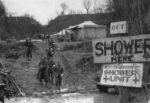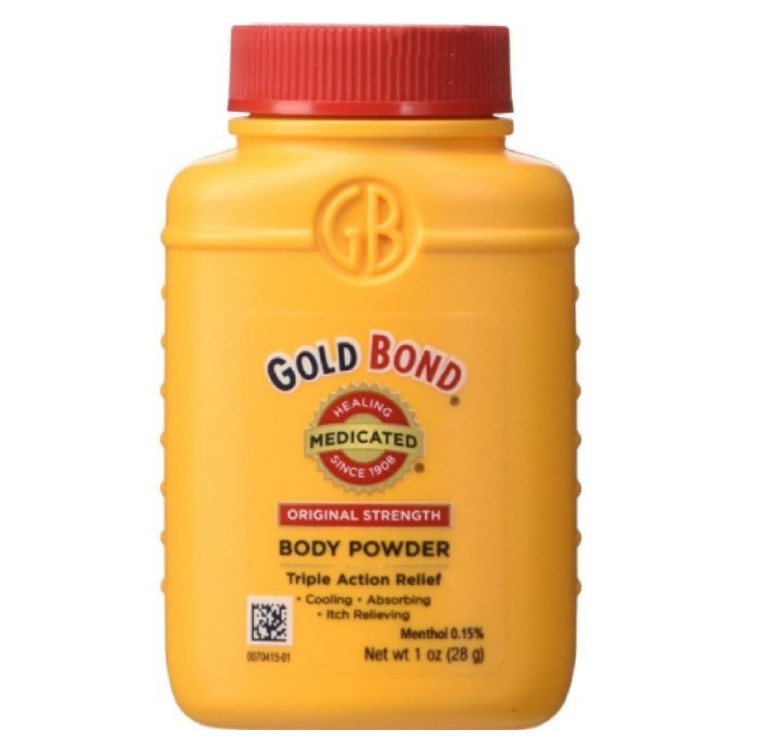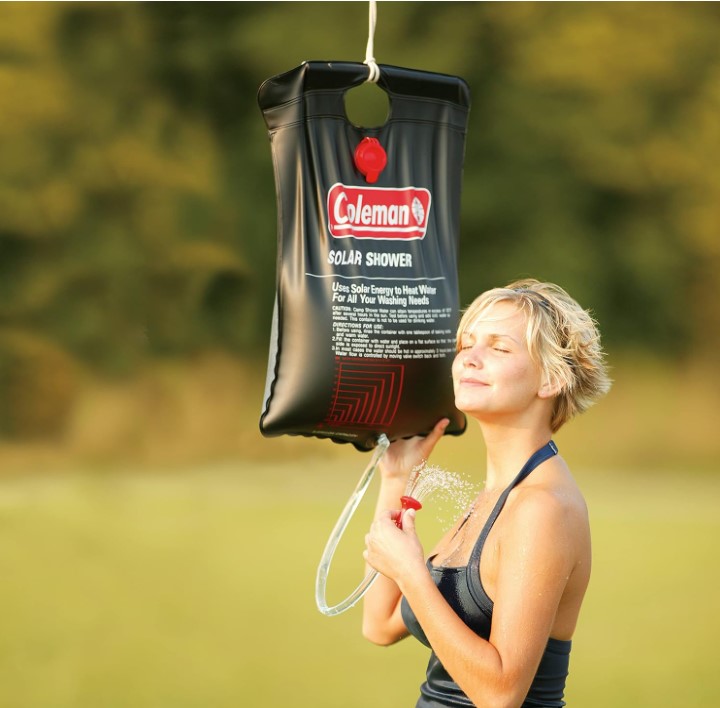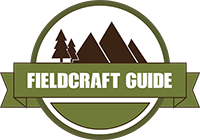Field Hygiene Tips: Keeping clean with less

One of the less glamorous topics, but definitely an important one is Army field sanitation, or how to stay healthy while in austere environments.
You can grab anyone off the street, give them a gun, and a uniform and they can pose as a Soldier, but there is an art to surviving in the field and keeping clean.
This was made evident during the American Revolution when General George Washington fought against smallpox and other poor hygiene related illness. It became clear that keeping Soldiers healthy was a vital part in winning the war.
Over the next few paragraphs I will instruct you on how to remain healthy through some proven field hygiene methods.
8 Keys to Healthy Feet: Never Get a Blister Again
One thing I have had the pleasure of learning during my 18 years in the Army is how important it is to take care of your feet. Nothing will kill morale faster than a group of Soldiers on a forced foot march with feet problems. It is incumbent on all leaders to monitor the care of their Soldier’s feet.
The following are some techniques I have learned to help keep your feet healthy during a long hike or ruck march.

- Trim your toenails before you leave. You should use a straight cut, which means do not cut the corners off your toenails, this can lead to ingrown nails. You may also want to file them down with a file to help reduce friction with your socks.
- The Best Foot PowderUse foot powder every time you change your socks. I prefer the yellow bottle Gold Bond Foot Powder. Check it out on Amazon by clicking here.
- Wear your socks inside out. The stitching in the toe can rub on your toes just under the nail and after a few miles can cause hot spots.
- Avoid cotton socks. I will typically use just a wool sock or wool blend. Some Soldiers swear by using tight fitting moisture-wicking socks underneath the wool socks as well.
- Wear well broken in boots that fit well. Start out with a moderately tight lacing and loosen as your feet start to swell (usually after about an hour of hiking).
- Change socks regularly. I recommend stopping about once every 90 minutes to hydrate and change into dry socks. Allow your feet to breath during this short break as well, don’t put your socks back on until it is time to get moving again. Hang your wet socks on your pack so they can dry out and be used again later when dry.
- As you march or hike you will begin to feel uncomfortable spots on your feet, these are the beginnings of a blister, also called hot spots. Tape them up immediately! Do NOT let them fester and become full blown blisters, or your feet will look like ground hamburger meat. I recommend taking some medical tape or, my favorite, 100 mile an hour tape or gorilla tape, and block that friction. You can also tape them up prior to the march or hike if you have known blister spots. For me it is always the outside of my pinky toes and top off my ring toes on both feet. I tape these before I even attempt a long march.
- In the evening when you make your camp slip into some flip flops to allow your feet time to air out. Also wash your feet with soap and water.
I Gotta Go! How to Use the Bathroom in the Woods
Army field sanitation also covers the topic of how to go to the bathroom when there is no bathroom. There will inevitably be that uncomfortable moment when you find yourself in the woods and you suddenly get the meat sweats and there is no bathroom in sight. The following tips are some ways that your needs can be met without contaminating anything.
Urination can be done almost anywhere as it is sterile and contains no bacteria. It does contain salts which attract some animals such as deer, sheep and goats. Find a location away from trafficked routes, and water sources.
The Cat Hole Latrine
This is simply a hole you dig in the ground, poop in it, and cover it up.
- Step 1. Find a spot 200 feet (70 paces) from the trail, route, water, campsite, or field feeding location.
- Step 2. A perfect spot would also be on high ground, away from drainage or runoff locations, in dark organic soil, and receives a lot of sun during the day. The sun and dark soil helps breakdown the bacteria.
- Step 3. Dig a hole about 6-12 inches wide and a foot deep. Keep soil close by. Find a good stick and keep nearby.
- Step 4. Defecate into hole. If you miss use stick (not your trowel or e-tool) to rake the poop into the hole.
- Step 5. Cover the hole in and tamp it down with your foot. Also cover the hole with leaves.
Pack it Out

The most environmentally friendly method is to pack your excrement in a sealable bag and take it with you, and some parks and trails require this. Also if you are int eh Army and go to NTC at Ft Irwin California, this is their only acceptable way for Soldiers to defecate in the field.
The simplest method is to pack a lot of ziploc bags. You poop on the ground, turn a ziploc inside out and wear it as a glove to pick up the excrement, and seal it in the bag. I recommend placing that bag in another bag (double bagging), and also keep a special container that is airtight to store it in.
I have seen homemade poo-tubes made of PVC that is capped off at one end and has an airtight screw cap on the other end with a d-clip to clip it on the outside of your pack. Then when you get to a garbage can, just dump your baggies into it.
There is also a nifty solution called a Waste Agglutination Gel (WAG) bag. This is the only permissible method of relieving oneself at the National Training Center in California. You defecate in a bag, pour a special chemical powder on it,and then bag that up in another bag. The chemical kills all harmful bacteria in the excrement. A lot of hikers prefer this method as well in rocky locations where cat holes are problematic. Check it out on Amazon here.
Straddle Trench
For campers or Soldiers that will remain in one place for several days the straddle trench is also a sanitary method for a field latrine. It is a series of trenches (dug as needed) that allows the user to straddle the trench, defecate, and then cover the excrement with a bit of soil to reduce insects and odor.
Step 1. Use same steps above (see Cat Hole)for selecting a viable location for your trench.
Step 2. Dig a trench 4 feet long, 2.5 feet deep, and 1 foot wide.
Step 3. If available place boards on each side of trench to ensure good footing.
Step 4. Place dirt from trench nearby with paddle or shovel, so users can cover their excrement after use.
Step 5. You can place brush or a tarp around the trench for privacy.
Step 6. You can dig more trenches parallel to each other as needed.
Feminine Hygiene in the Field
I will be honest, I had to consult with my wife for some of this information, and conducted a lot or research in field manuals and regulations to find the best information for this next section.
- One of the biggest issues I have found during my research is the increased frequency of Urinary Tract Infections (UTIs). This is caused by a lack of urination due to concerns about privacy or the hassle of removing gear and pulling your pants down to urinate. Females should urinate when they need to, not hold it in.
- Females should carry baby wipes to keep their genitals as clean as possible to help fight infection.
- Wash hands before and after using the bathroom, as well as changing menstrual related devices.
- Females should avoid perfume infused baby wipes or feminine products. The perfume raises the pH level allowing bacteria to grow.
- Avoid douching, it kills healthy bacteria and increases your chance of an infection.
- Take a multi-vitamin with at least 15mg of Iron, 1000mg of Calcium, and 400mg of folate (folic acid). It is difficult to get these vitamins from trail food or field rations.
- Wear cotton underwear, as it allows more breath-ability to sensitive regions.
- Avoid tight fitting clothing which can create a haven for bacteria
- When defecating always wipe front to back to prevent carrying feces forward into the genitalia.
- Tampons are recommended over pads or panty liners due to the mobility of a female Soldier or hiker. You should carry a variety of absorbency types to account for changes in menstrual cycle flow. A 30 day supply is recommended and Ziploc bags to place used devices in when spent.
How to Wash Clothes While Hiking, Camping, or on a Field Exercise

My first recommendation is to not wash clothes too often. It requires you to pack out too much soap, and takes valuable down time at camp. I change socks about every two hours but place the sweaty socks on the outside of my pack to dry then reuse, until they become stiff and begin to chafe.
I change clothes every evening when we stop to camp, but I will continue to wear the clothes once dry until they become too smelly or begin to chafe. Placing wet socks or clothes in sleeping bag at night with you will aid in drying.
When I do wash clothes one simple method that has never failed me is to get a 2 gallon ziploc freezer bag, put some biodegradable soap in it with some water and hand agitate it for about 5 minutes. Then I sling the water out, and twirl the clothing over my head like a helicopter. I then do the same process for rinsing. If it is warm enough you can put the fresh clothes on right away and they will dry on your body faster. I prefer Campsuds soap for personal hygiene, dishes, and clothes, click here to see it at Amazon.
There is also a cool gadget called the warsh bag that can be used in the same manner. I store electronics etc in it when packed to keep them safe, and after washing clothes I turn it inside out overnight to dry. Check it out on Amazon here.
Staying Fresh: Bathing in the Field or on the Trail

Whenever I am on a hike or in the field for a training exercise I like to clean up daily. That doesn’t mean a full blown shower, but at least I do a little something to stay fresh, or fresher anyways.
The best method to clean yourself is to jump in a lake (mind the snakes). However do NOT use any soap with this method. It is a good way to get dirt and mud off, but soap can contaminate water and regular soap can cause algae to bloom and destroy sensitive ecosystems.
The method I use most often is unscented baby wipe sponge bath. I always wipe down my face first, then get a new wipe and hit my armpits, a new wipe and hit my groin and butt area, and a new wipe to hit my feet. This will do wonders for your morale.
When situations permit, mainly a campsite or field exercise I will setup a solar shower. These are basically a black bag (to absorb heat from the sun) that you fill with water and let it sit in the sun all day. In the evening you hang it from a tree or off your vehicle and it slowly sprays water on you. I use the Coleman Solar Shower due to it’s cheap price, click here to check it out on Amazon.
Ensure you only leave the water spraying to wet your body initially, and then to rinse. The lathering and scrubbing portion should not require water. You do not want to run out of water before you are able to rinse. Ensure you use the shower 200 feet from fresh water, or a field feeding area. You also may want to find a place that allows for privacy or put up a poncho for a blind.
What Goes in a Field Hygiene Kit?
There are several items that I MUST have in my field hygiene kit. You may require more items, for comfort, and that is ok. If you want a full shaving kit including a brush, shaving soap, electric toothbrush, etc that is fine. Bottom Line is you have to carry it not me. The following is what I always have in my kit.
- Toothbrush with travel cap
- Floss
- Toothpaste
- Electric Razor
- Backup safety razor
- Backup shaving cream
- Signal Mirror (for shaving)
- Bar Soap in soap dish
- Meds ( I carry Ibuprofen, allergy pills, nasal decongestant, Neosporin, and multivitamins)
- Unscented Baby Wipes
- Deodorant (some say leave it at home, it is a comfort item)
- Those with long hair or beards may want baking soda to powder their hair and deodorize it, dry.
Summary
Your feet are your most valuable tool on the trail or in the field, take care of them. Going to the bathroom in the field takes some planning, head tht tips above to make it as comfortable and safe as possible. When hiking or training with females in the field consider they have special needs and plan for it. A shower or dip in the lake can boost morale more than you can imagine, plan for time to bathe accordingly. Lastly take some time to pack your personal hygiene kit so you have what you need, and desire for cleanliness! Comment below with your suggestions.
